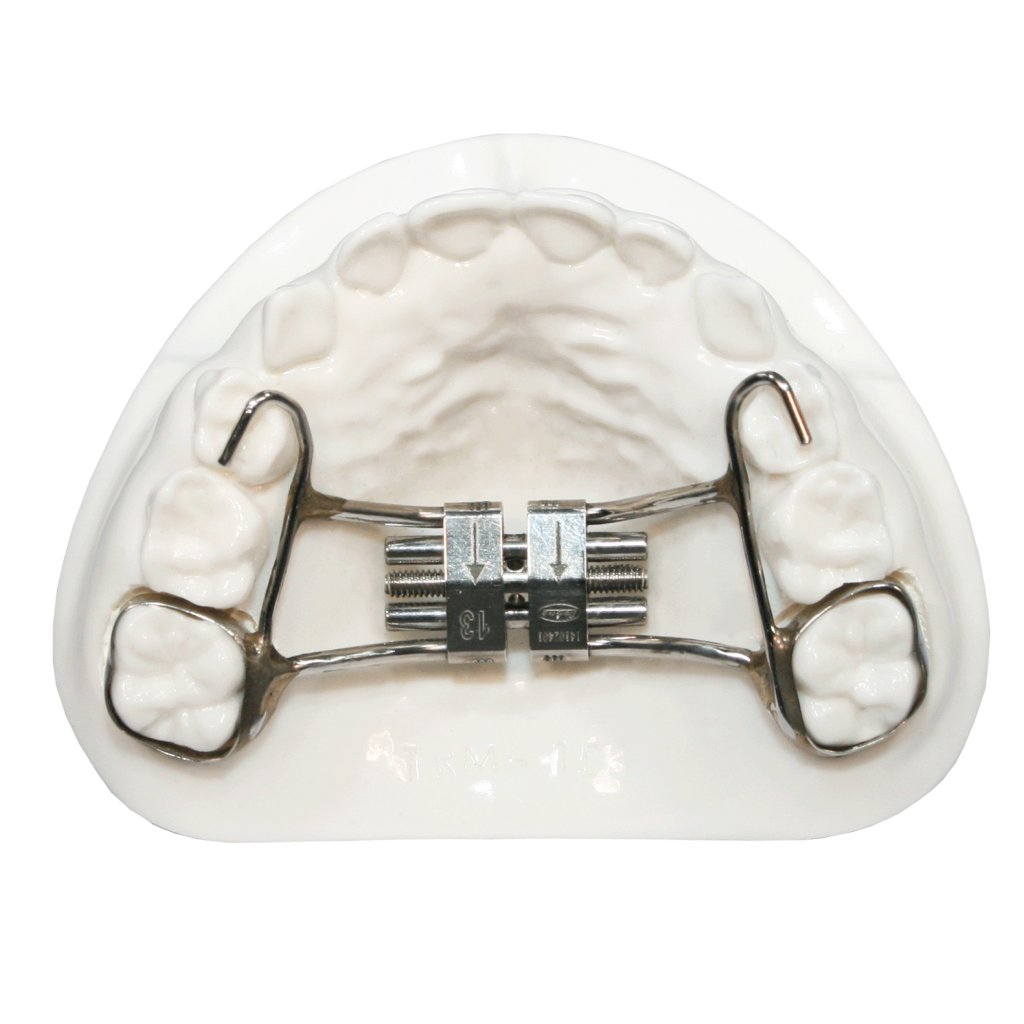
The Rapid Palatal Expander (RPE) is a popular orthopedic appliance used to separate the mid palatal suture. Rapid expansion is obtained over a two to three week period by means of turning the expansion screw once a day. This can only be done when the patient is still growing or surgery is involved to separate the two halves of the mid palatal suture. This appliance uses an all-stainless steel framework. The expansion screw is positioned high in the palate for greater patient comfort. The screws come in 8, 11, and 13mm sizes. Bands are placed on the first molars and rests are bonded to the occlusal surface of the first primary molars. This popular design is useful in mixed dentition and eliminates the path of insertion problems that occur when four bands are used. As the patient turns the RPE using the key, a diastema develops between the front two teeth. Some may notice a larger space while others do not notice a space at all. It usually takes 3 to 5 days to adjust to eating and speaking after first receiving the RPE. Slow palatal expansion may also be achieved with an RPE. The patient is instructed to turn the appliance 1 turn twice a week. Dental-alveolar compensation occurs as the molars slowly move transversely without separation of the mid palatal suture. Orthodontic treatment typically follows.
Lab Requirements: Upper model free of bubbles, distortions, or voids. Impressions must be taken with a heavy body alginate or PVS.
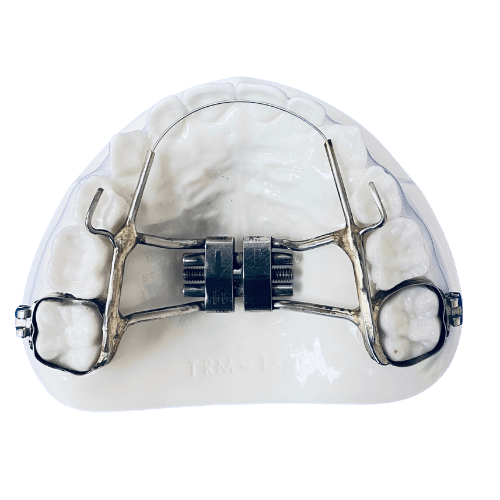
The Williams Expander is a fixed appliance used to develop the upper arch. As the appliance expands, the NiTi wire travels forward within the lingual tubing, initiating anterior rotation corrections.
Lab Requirements: Upper model free of bubbles, distortions, or voids. Impressions must be taken with a heavy body alginate or PVS.
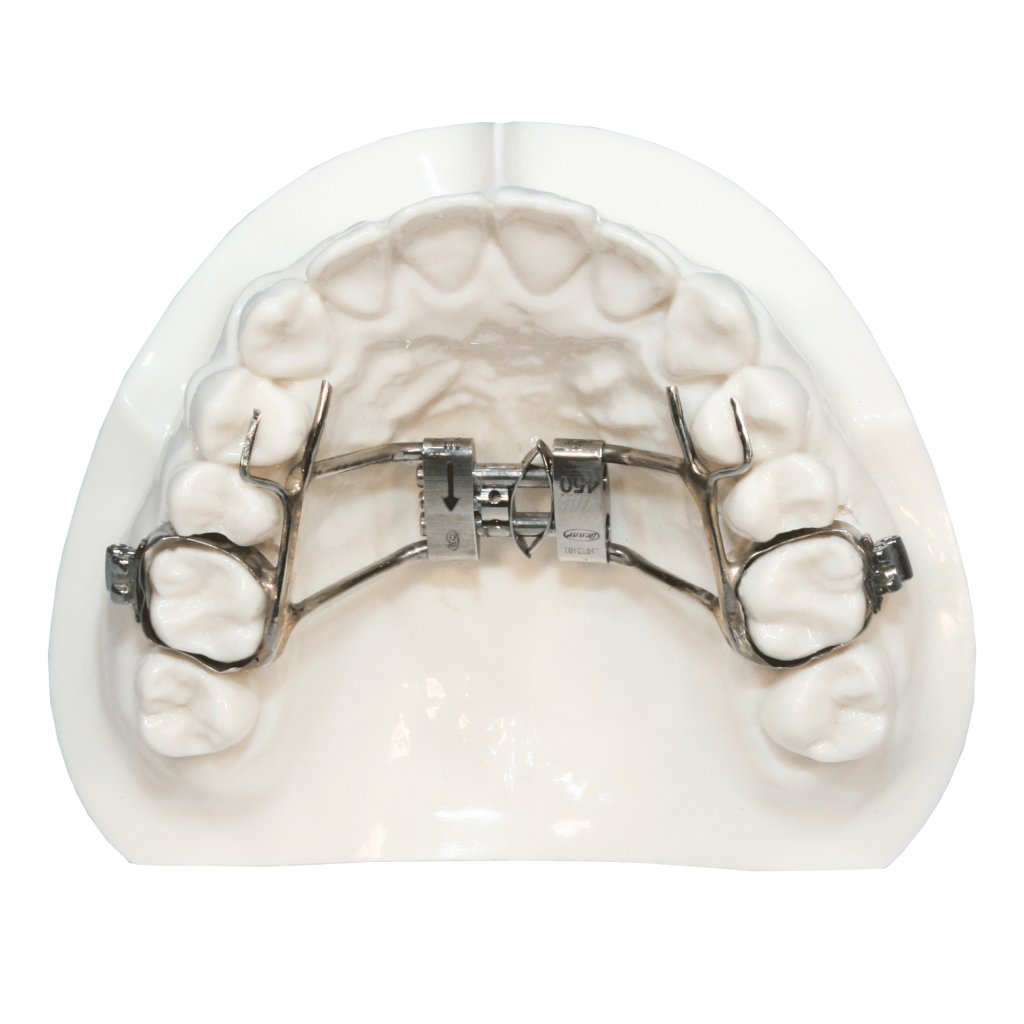
The Adjustable Memory Gear Expander is great for non-compliant patients. You are in control! The memory gear allows you to activate the appliance at each appointment. This expander features a small size body, and is equipped with nickel titanium leaf springs allowing the release of calibrated and continuous forces to promote expansion of the maxillary arch. This appliance will come back from the lab preactivated with the leaf springs compressed and a key holding it together. To activate the appliance, simply pull the key out of the appliance. Once activated, the appliance will expand on it’s own for 2-2.5 months. Reactivation is needed when the leaf springs move apart. To reactivate the leaf springs, turn the gear like a normal hyrax gear until the leaf springs are compressed to the required additional activation, each turn is 0.1mm so 10 turns are needed for 1mm of additional load. It is recommended that you see the patient once a month. The appliance will expand to the amount of activations, then stop.
CLICK HERE FOR ACTIVATION INSTRUCTIONS
Lab Requirements: Upper model free of bubbles, distortions, or voids. Impressions must be taken with a heavy body alginate or PVS.

The mandibular Skeletal Expander is an alternative to the removable Schwarz appliance. This durable fixed metal expander provides lateral expansion in the mandibular arch.
Lab Requirements: Upper or Lower model free of bubbles, distortions, or voids. Impressions must be taken with a heavy body alginate or PVS.
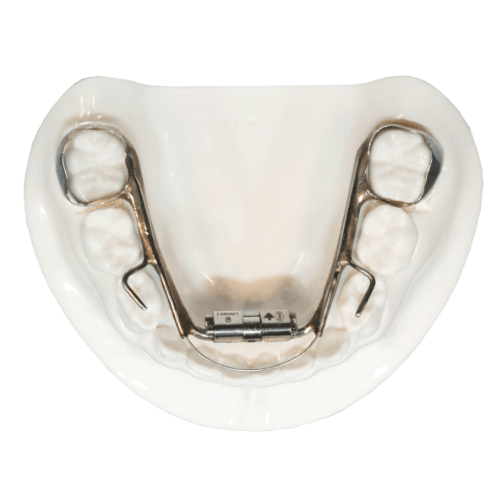
The Williams Expander is a fixed appliance used to develop the lower arch. As the appliance expands, the NiTi wire travels forward within the lingual tubing, initiating lower anterior rotation corrections.
Lab Requirements: Lower model free of bubbles, distortions, or voids. Impressions must be taken with a heavy body alginate or PVS.
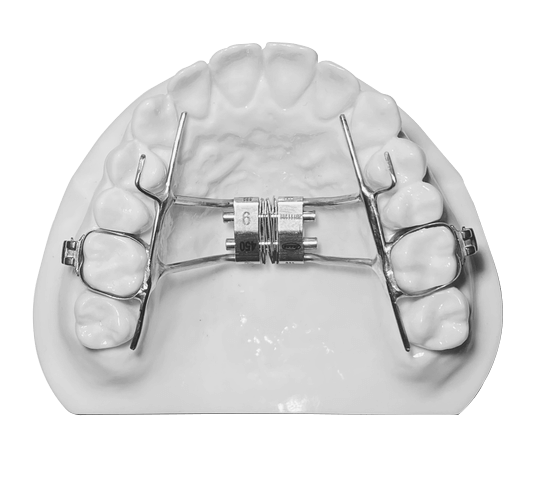
Featuring all the advantages of the Memory Gear Expander without the need of periodic reactivation. The work of this expander is assigned entirely to the flexible properties of the nickel titanium leaf springs releasing controlled and continuous forces. The Self Activating Memory Gear comes in both 6mm and 9mm sizes. Once placed, no further action is required by the doctor or the patient. The appliance will simply expand to the indicated mm size of the gear.
Lab Requirements: Upper model free of bubbles, distortions, or voids. Impressions must be taken with a heavy body alginate or PVS.
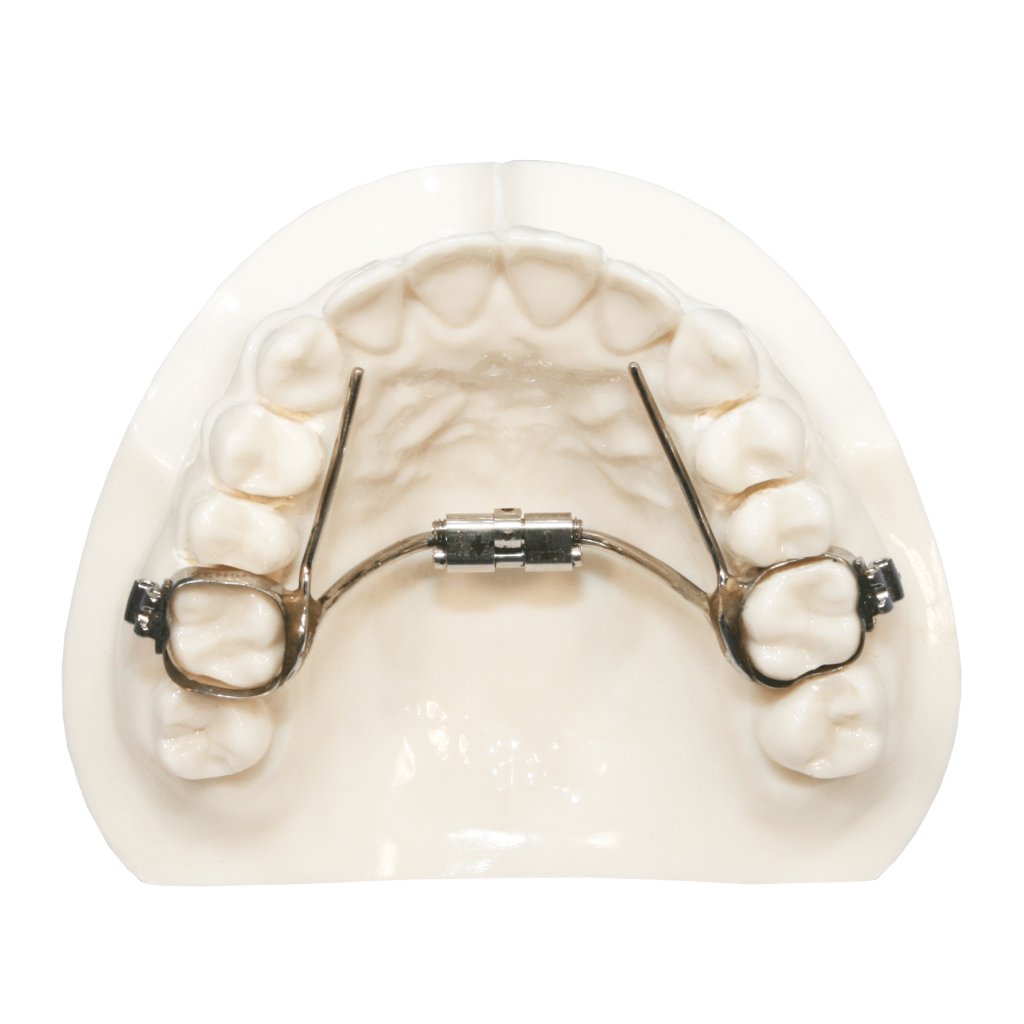
The Mini RPE is an excellent option with adult patients who do not want a bulky gear in the palate. Lingual arms extend to the anterior region. The arms can be activated to selectively develop or for individual tooth movement.
Lab Requirements: Upper model free of bubbles, distortions, or voids. Impressions must be taken with a heavy body alginate or PVS.

The Snap Fit RPE is a great option for doctor’s that don’t want to place bands on a patient. This appliance uses an all stainless steel framework that wraps around the molars and primary molars or bicuspids. It is recommended that the doctor places composite to the buccal-occlusal of the framework on one or more of the teeth on both sides.
Lab Requirements: Upper model free of bubbles, distortions, or voids. Impressions must be taken with a heavy body alginate or PVS.
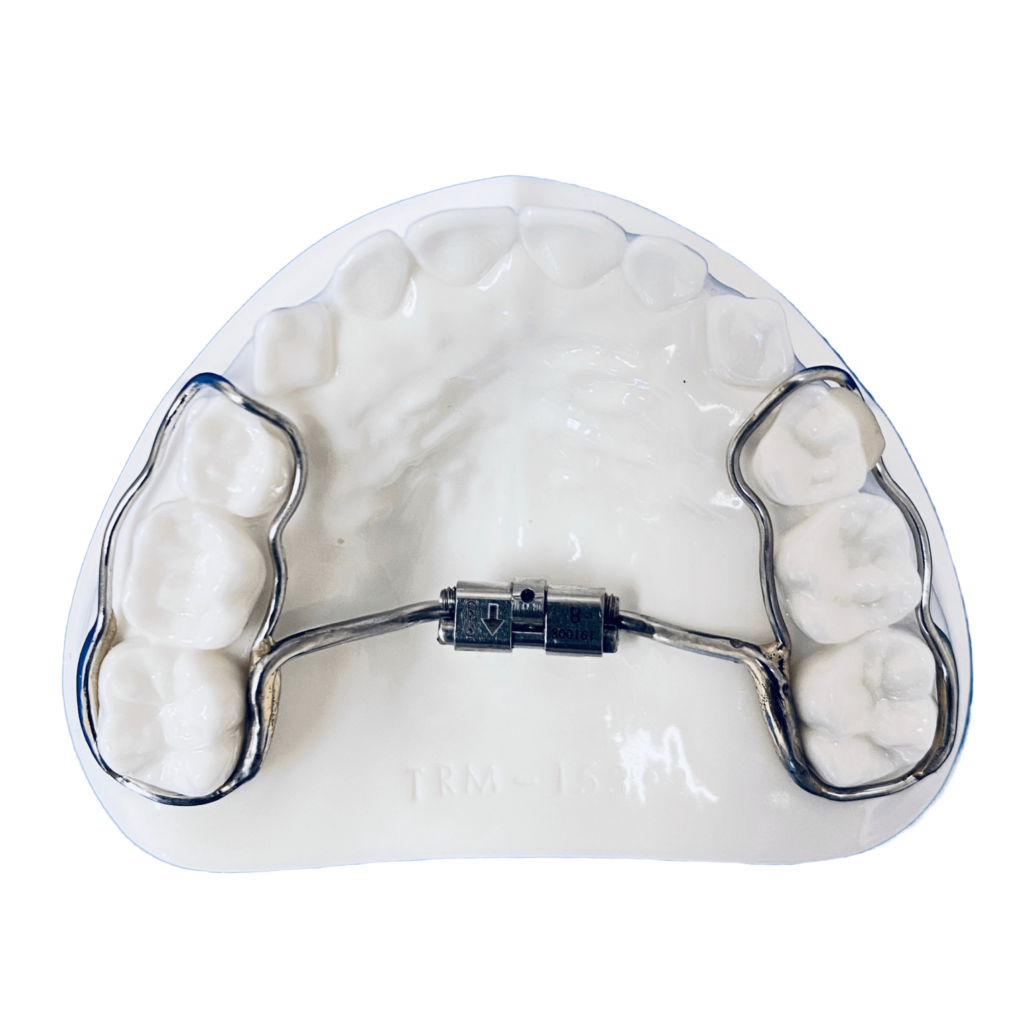
The Snap Fit Mini RPE is a great option for doctor’s that don’t want to place bands on a patient. This appliance features a low profile gear in the palate that provides more tongue space and better patient comfort. It uses an all stainless steel framework that wraps around the molars and primary molars or bicuspids. It is recommended that the doctor places composite to the buccal-occlusal of the framework on one or more of the teeth on both sides.
Lab Requirements: Upper model free of bubbles, distortions, or voids. Impressions must be taken with a heavy body alginate or PVS.
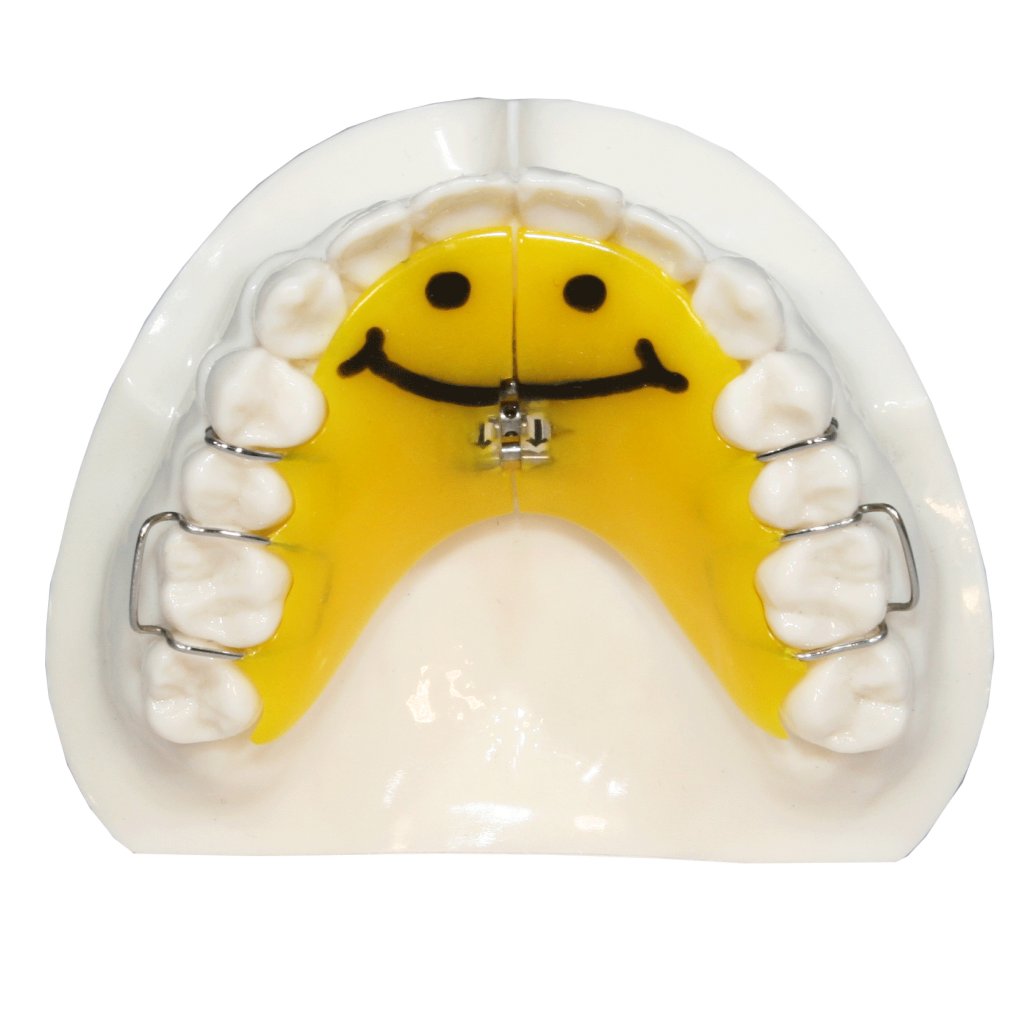
The Schwarz is a popular removable orthopedic appliance available for both the upper and lower arches. The Upper Schwarz can be used to obtain rapid or slow palatal expansion. Rapid palatal expansion is done over a two to three week period by means of turning the expansion screw once a day. This can only be done when the patient is still growing or surgery is involved to separate the mid palatal suture. The screws come in 8, 11, and 13mm sizes. As the patient turns the gear, a diastema develops between the front two teeth. Some may notice a larger space while others do not notice a space at all. Slow palatal expansion is done by activating the appliance 1 turn twice a week. Dental-alveolar compensation occurs as the molars slowly move transversely without separation of the mid palatal suture. Orthodontic treatment typically follows.
Lab Requirements: Upper and/or lower models free of bubbles, distortions, or voids. The palate must be fully impressed. Impressions must be taken with a heavy body alginate.
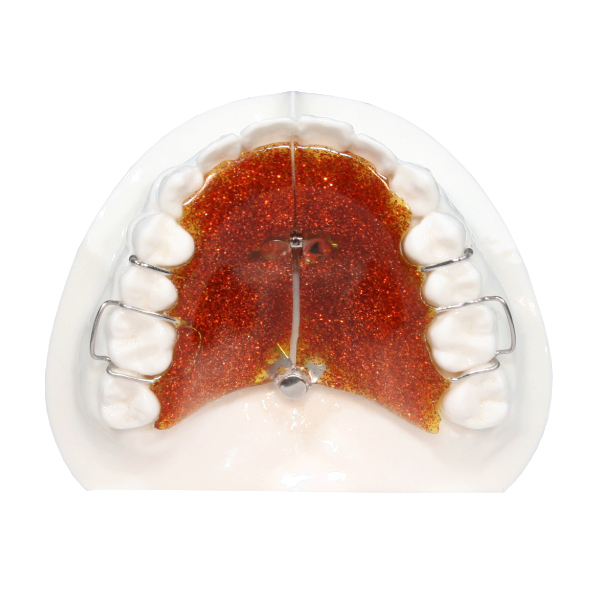
The Fan Gear Schwarz is a removable expander with a hinged gear that allows you to develop the bicuspid region with limited expansion of the molars. This appliance is ideal for a compliant patient with an “S” shaped arch.
Lab Requirements: Upper model free of bubbles, distortions, or voids. Impressions must be taken with a heavy body alginate or PVS.
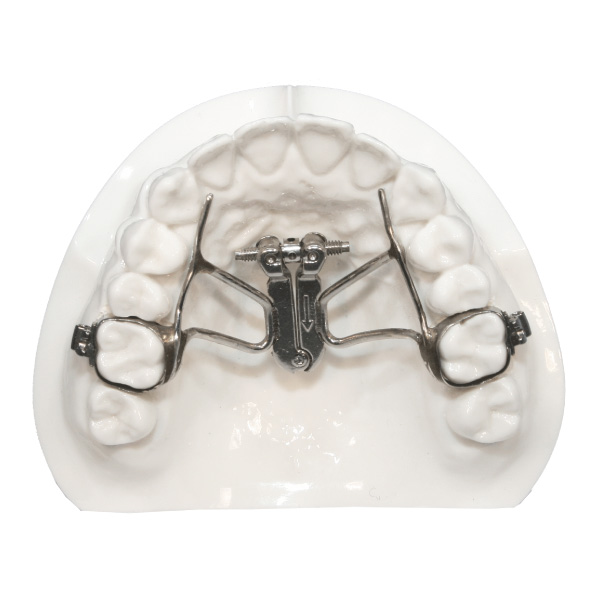
The Fixed Fan Gear is excellent for patients who exhibit a v-shaped arch form. The Fixed Fan Gear maintains inner molar width while developing the cuspid and bicuspid region.
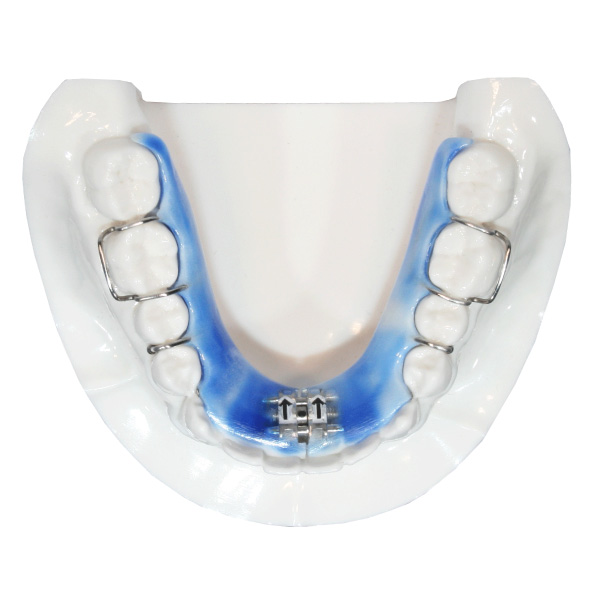
The Schwarz is a popular removable transverse orthopedic appliance available for both the upper and lower arches.
Lab Requirements: Upper or Lower model free of bubbles, distortions, or voids. Impressions must be taken with a heavy body alginate or PVS.
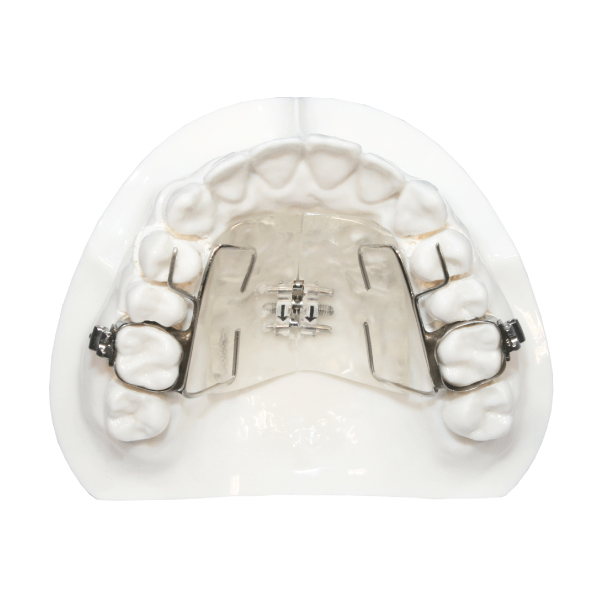
The Haas appliance is a fixed expander which utilizes palatal acrylic to produce forces on both the teeth and palatal mucosa. Many clinicians feel the Haas expander achieves better bodily movement of the tooth within the bone.

This fixed expansion appliance develops the arch using a spring-loaded split-lingual arch, housed in a tube. The tension on the coil spring is set before the appliance is initially placed and further adjustment is not usually necessary. Once the desired space has been created, the appliance can be made passive by crimping the tube or using flowable composite over the spring. This appliance is often used in conjunction with a full arch, fixed technique. When this is the case make sure to ask the lab to fabricate the appliance with molar tubes weldedto the bands. It is always difficult to cement a pre-activated spring-loaded appliance. To make it easier, ask the lab to return the appliance to you on the model. This will allow you to tie the appliance together and control the spring action prior to cementation.
Lab Requirements: Upper and/or lower models free of bubbles, distortions, or voids. Impressions must be taken with a heavy body alginate or PVS.
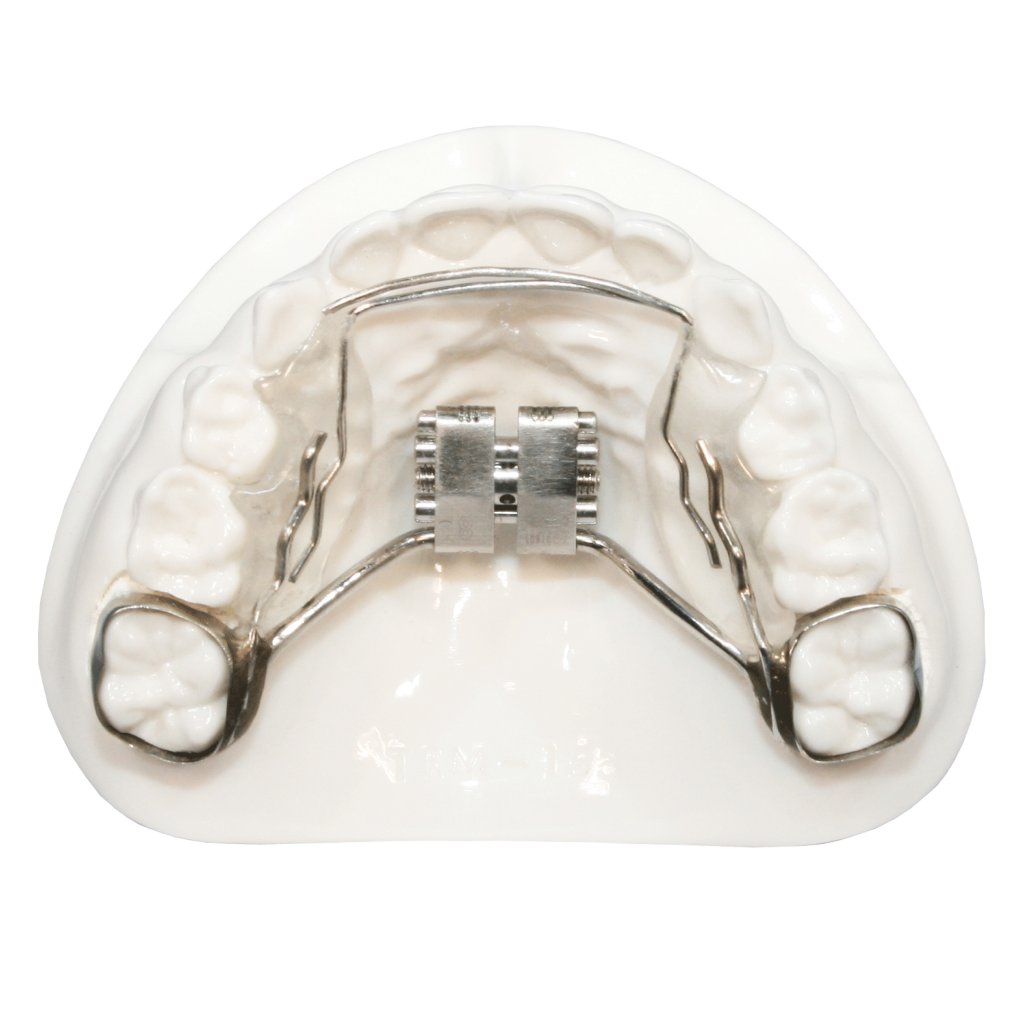
The Five Star Mixed Dentition Upper Expander has lingual acrylic that not only gives stability to the appliance, but provides boney development during the phases of mixed dentition. Lap springs are often added to initiate upper anterior rotation correction. To activate the lap springs simply use your Jarabak plier to bend the wires anteriorly at the base of the lap spring. The activation should be no more than 1 mm. Individual tooth movement can be achieved by placing bends on areas of the lap springs where correction is desired. This should be done at each appointment until the desired corrections have occurred.
Lab Requirements: Uppermodel free of bubbles, distortions, or voids. Impressions must be taken with a heavy body alginate or PVS.
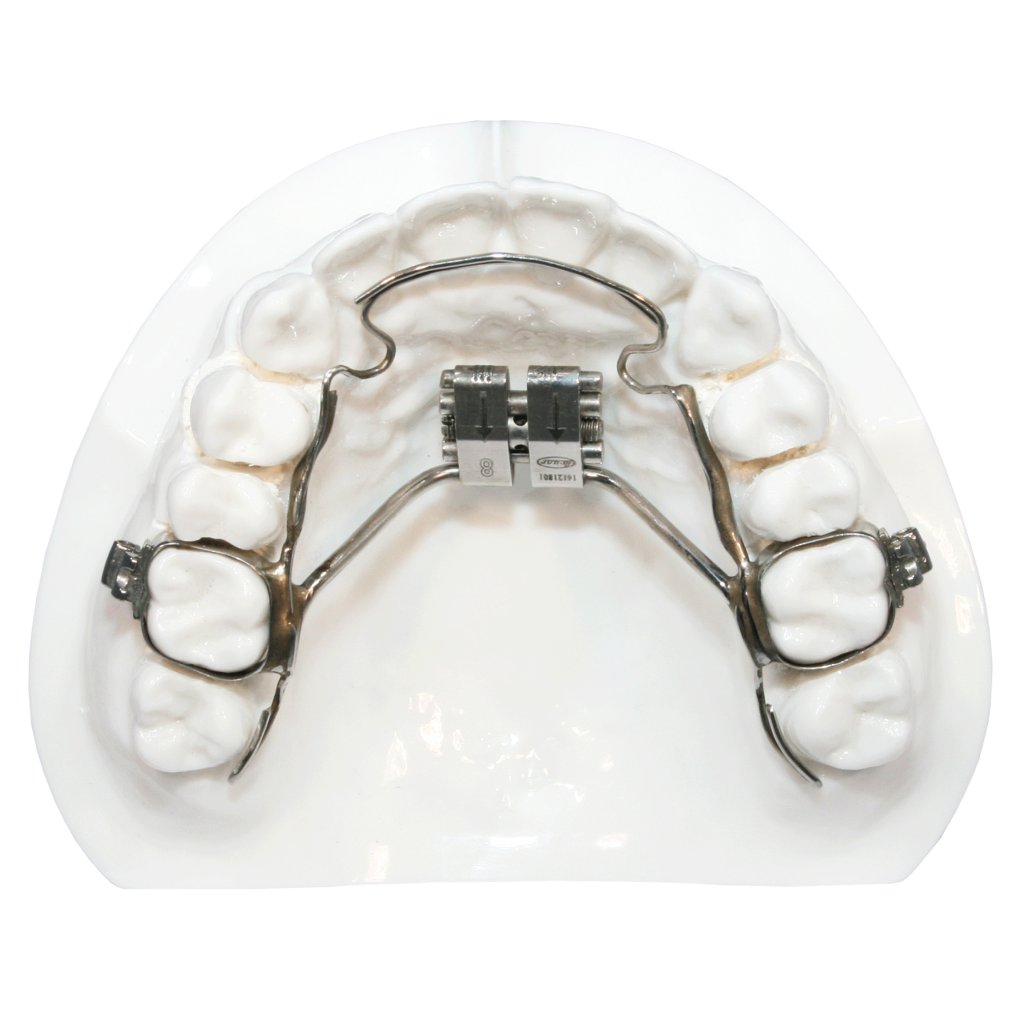
Upper air way obstruction, thumb sucking and mouth breathing all contribute to the constricted “V” shaped upper arch. When asymmetries exist, the Five Star Maxillary Expander is an excellent choice. Lap springs are often added to initiate anterior rotation correction. As the arch develops transversely, the lap springs provide enough force to move the anterior teeth into alignment. To activate the lap springs simply use your Jarabak plier to bend the wires anteriorly at the base of the lap spring. The activation should be no more than 1mm. Individual tooth movement can be achieved by placing bends on areas of the lap springs where correction is desired. This should be done at each appointment until the desired corrections have occurred. The minimal bulk of this appliance is patient friendly as well as hygienic. The patient has access to remove any microbial accumulation through brushing, irrigation and oral rinses.
Lab Requirements: Upper model free of distortions and voids. The palate must be fully impressed. Impressions must be taken with a heavy body alginate.
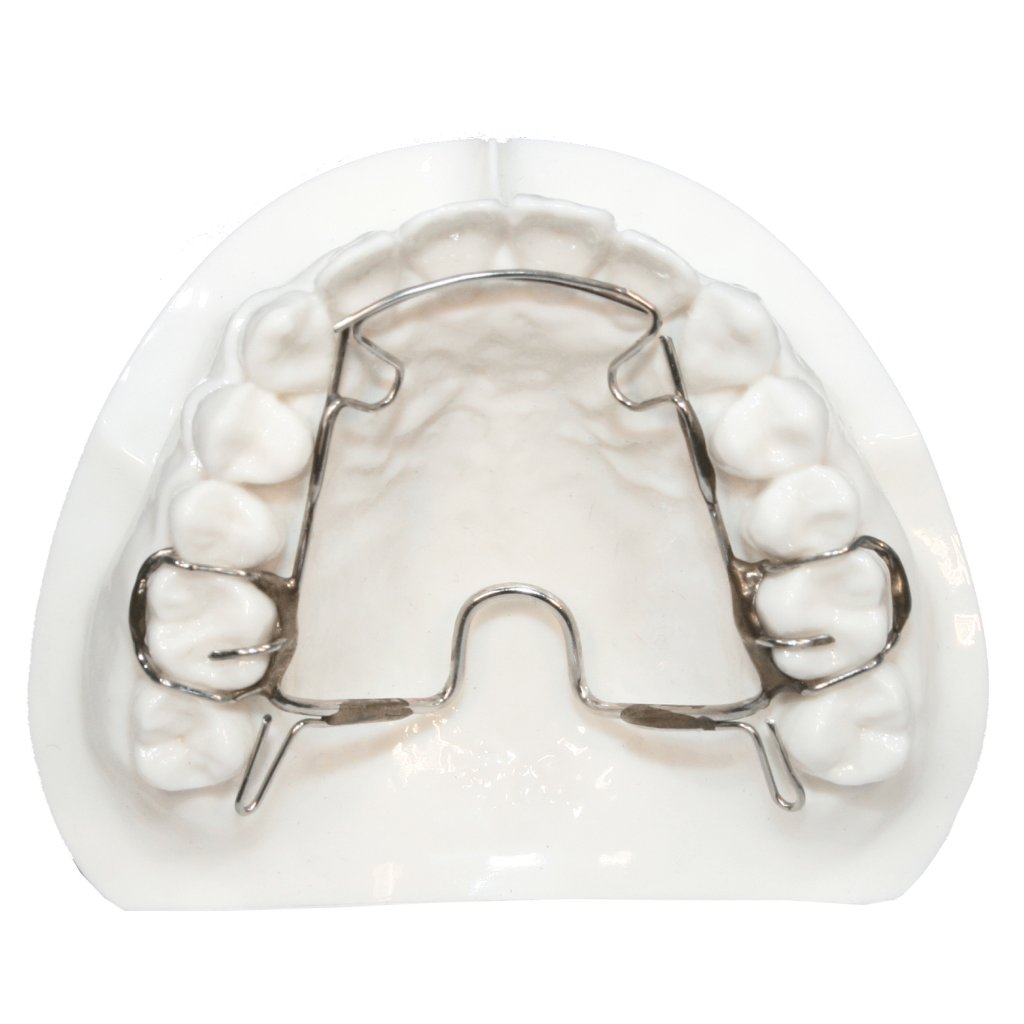
The Crozat is a very versatile removable appliance. The Crozat technique requires very careful and accurate appliance adjustment. It can be used to develop arches transversely, develop alveolar bone, control skeletal growth changes, establish proper occlusal plane, create harmony between teeth, TMJ, and muscles, and also move individual teeth into proper position. Many different auxiliaries can be added to the Crozat design depending on the doctor’s treatment plan. This appliance has lingual lap springs for the upper incisors as well as extensions to the cuspids. Distal extensions (as shown here) can be added to develop second molars if present.
Lab Requirements: Upper model free of bubbles, distortions, or voids. Impressions must be taken with a heavy body alginate or PVS.
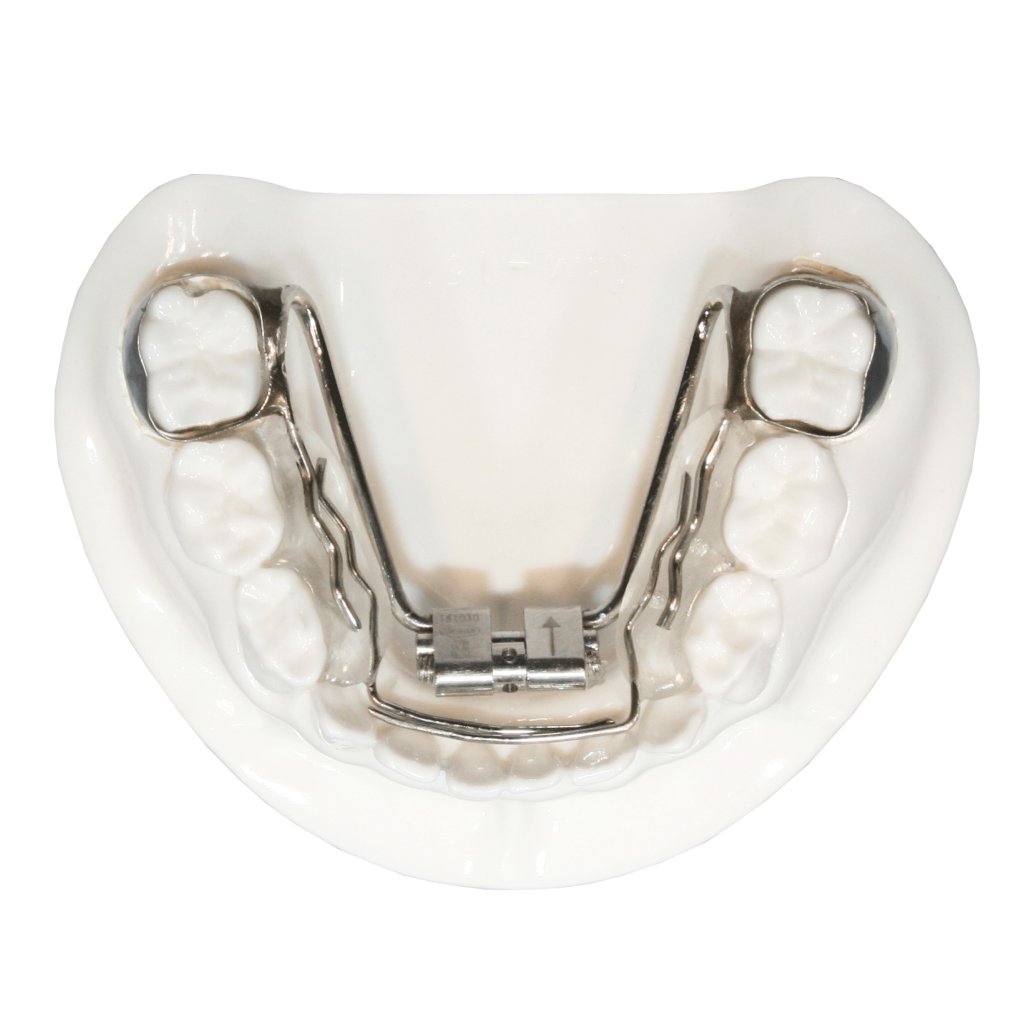
The Five Star Mixed Dentition Lower Expander is excellent for uprighting posterior segments and correcting mandibular asymmetries. The lingual acrylic not only gives stability to the appliance, but provides boney development during the phases of mixed dentition. Lap springs are often added to initiate lower anterior rotation correction. To activate the lap springs simply use your Jarabak plier to bend the wires anteriorly at the base of the lap spring. The activation should be no more than 1 mm. Individual tooth movement can be achieved by placing bends on areas of the lap springs where correction is desired. This should be done at each appointment until the desired corrections have occurred. The minimal bulk of this appliance is patients friendly and hygienic.
Lab Requirements: Lower model free of bubbles, distortions, or voids. Impressions must be taken with a heavy body alginate or PVS.
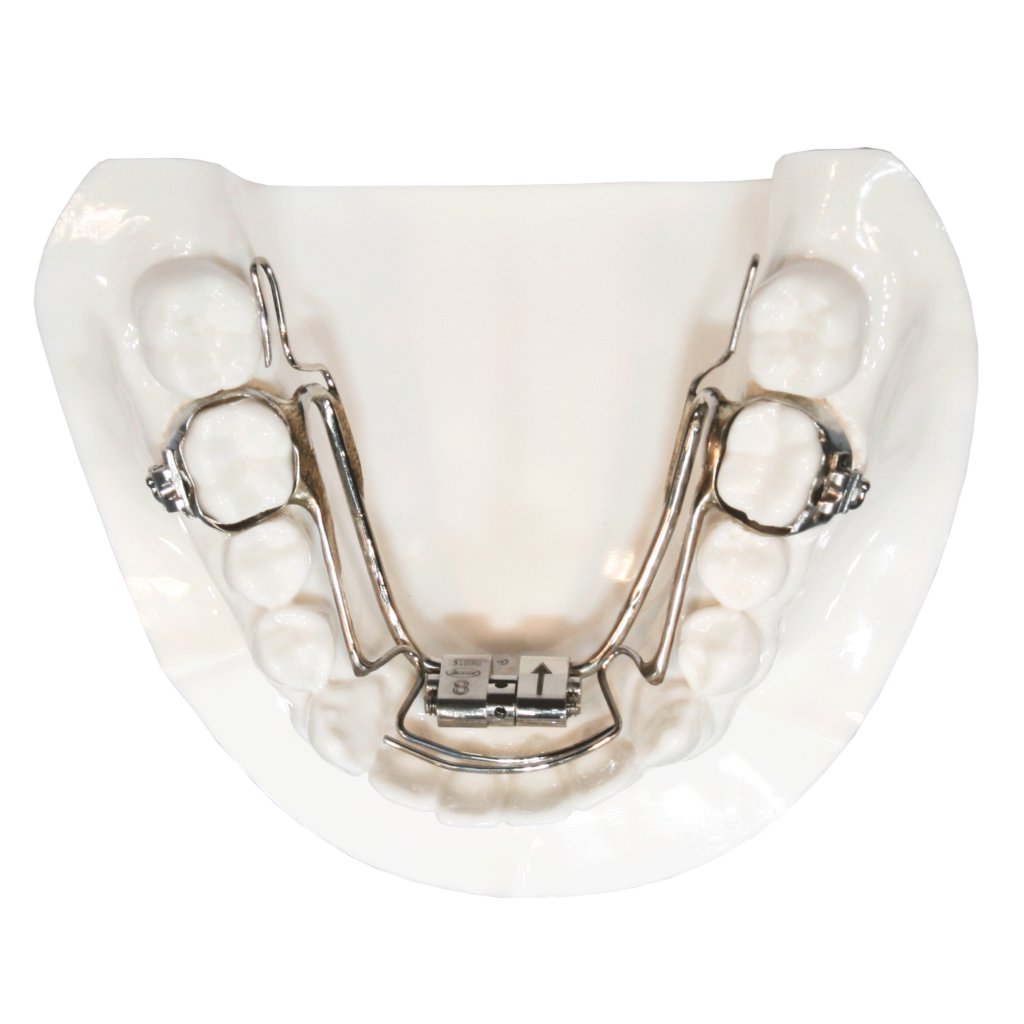
As the patient develops, the tongue plays an important role in mandibular arch development. When an underdeveloped maxilla doesn’t allow the tongue to posture correctly the lower posterior segments “dump” in and anterior rotations arise. The Five Star Mandibular Fixed Expander is excellent for uprighting posterior segments and correcting mandibular asymmetries. Lap springs are often added to initiate lower anterior rotation correction. To activate the lap springs simply use your Jarabak plier to bend the wires anteriorly at the base of the lap spring. The activation should be no more than 1 mm. Individual tooth movement can be achieved by placing bends on areas of the lap springs where correction is desired. This should be done at each appointment until the desired corrections have occurred. The minimal bulk of this appliance is patients friendly and hygienic.
Lab Requirements: Lower model free of bubbles, distortions, or voids. Impressions must be taken with a heavy body alginate or PVS.
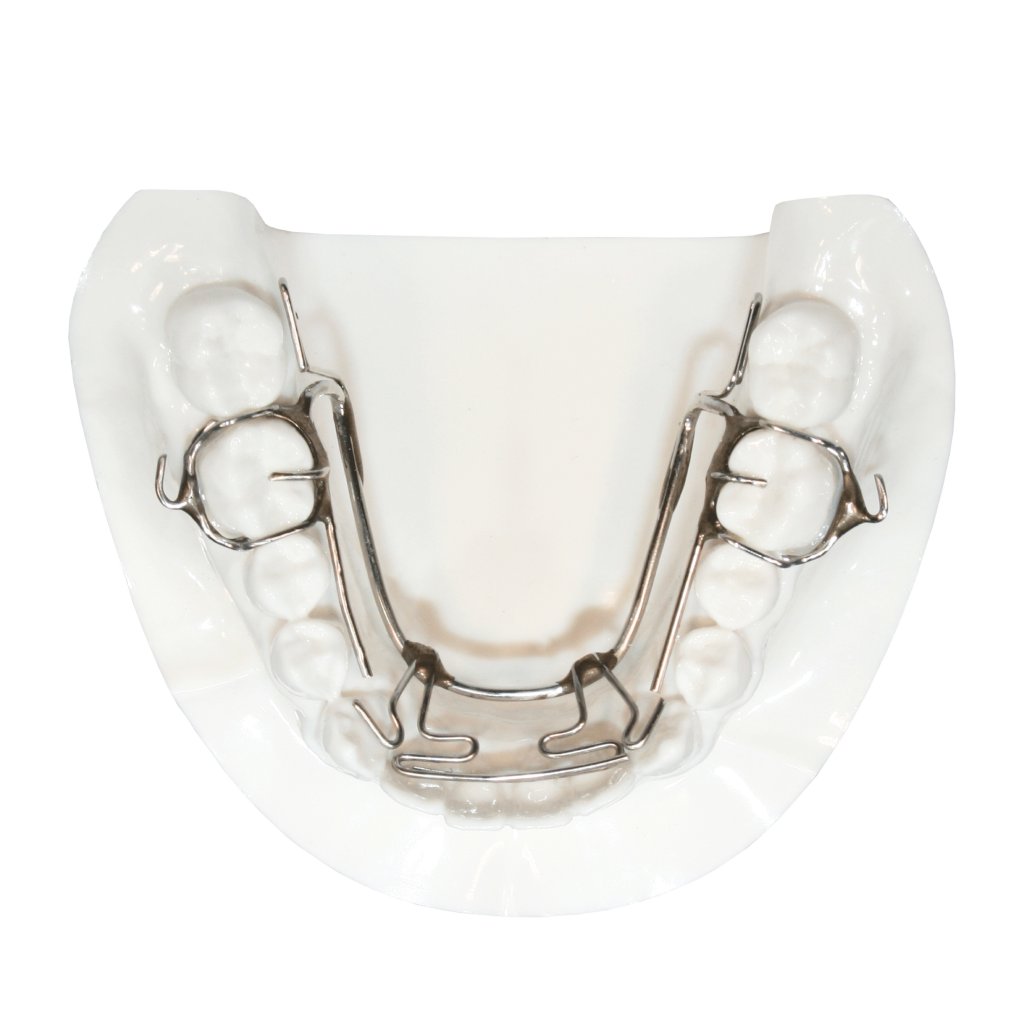
The Lower Crozat is used simultaneously with an upper Crozat appliance for transverse development. Many different auxiliaries can be added to the Crozat design depending on the doctor’s treatment plan. This appliance has lingual lap springs for the lower incisors as well as individual springs for the cuspids. Distal extensions (as shown here) can be added to develop second molars if present.
Lab Requirements: Lower model free of bubbles, distortions, or voids. Impressions must be taken with a heavy body alginate or PVS.
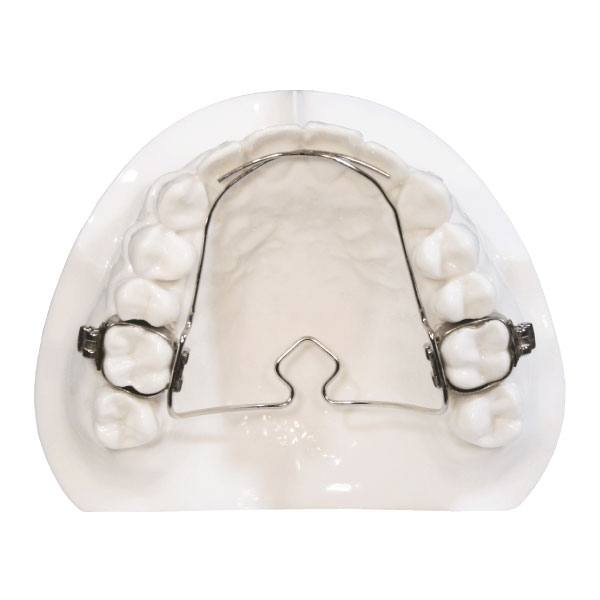
The 3D Multi-Action Transpalatal Appliance provides arch expansion or contraction (unilaterally or bilaterally), expansion or contraction of bicuspids, advancement of incisors, and rotation, tip and torque of all molars. Buttons are often placed on the lingual of the cuspids to keep the lingual wires functioning in a horizontal plane. The Wilson 3D fits into vertical slots on the lingual of the first molars. The vertical slots allow for quick and easy adjustments throughout treatment. Download PDF Instructions
Lab Requirements: Upper model free of bubbles, distortions, or voids. Impressions must be taken with a heavy body alginate or PVS.
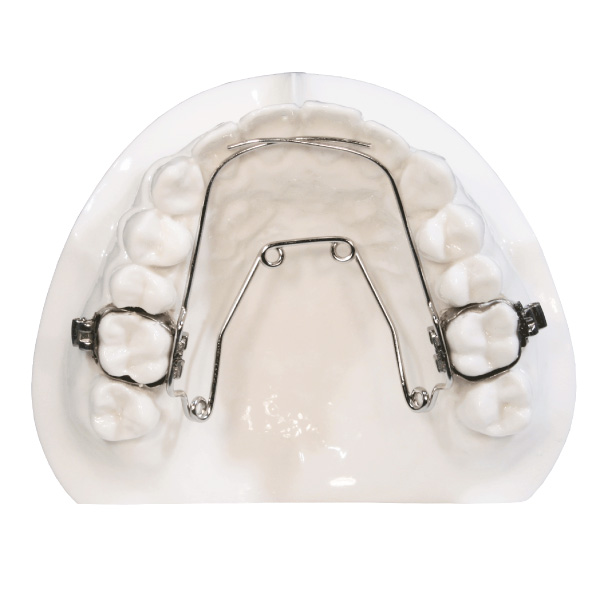
The main function is to expand the arch. It can also assist with tooth rotations, crown tip and torque.
Lab Requirements: Upper or Lower model free of bubbles, distortions, or voids. Impressions must be taken with a heavy body alginate or PVS.
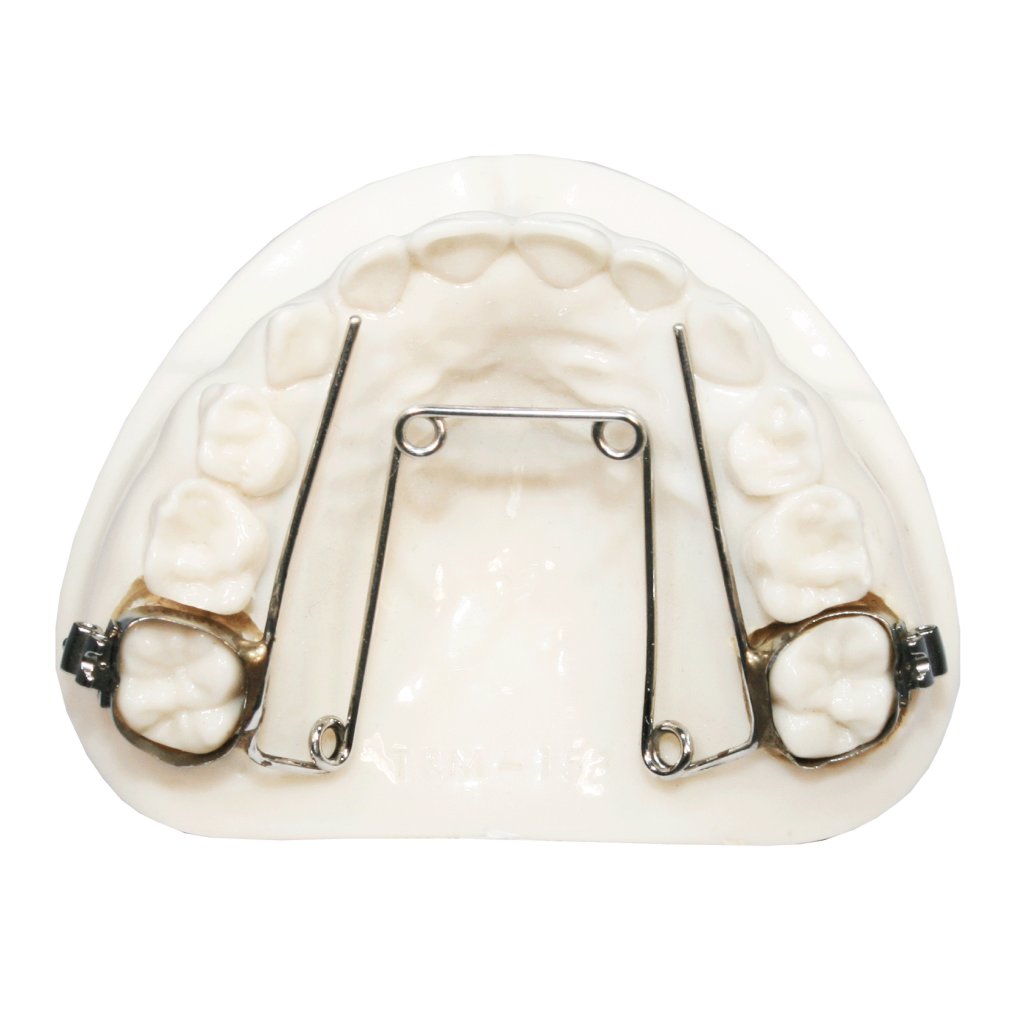
The Quad Helix is a versatile appliance. Popular because of its minimal bulk, the Quad Helix can be activated to expand transveresly and/or rotate molars. Lingual arms extend forward from the molars and can be selectively activated for individual tooth movement or group expansion.
Lab Requirements: Upper model free of bubbles, distortions, or voids. Impressions must be taken with a heavy body alginate or PVS.
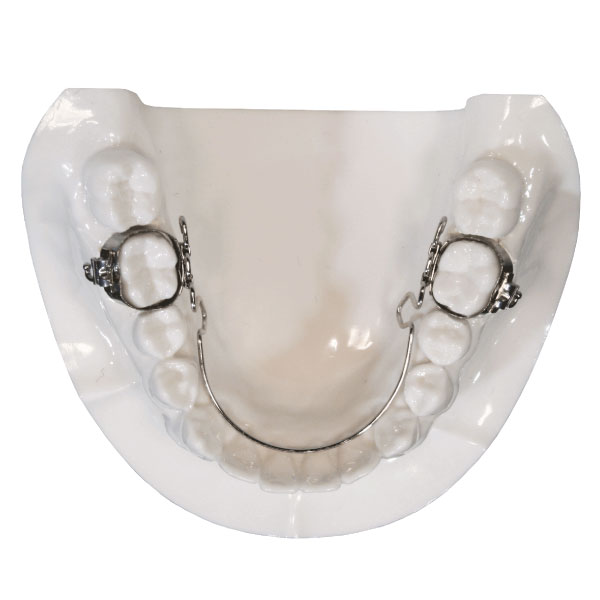
The Wilson 3D Lingual Arch is a popular versatile modular appliance. In addition to gaining mandibular anchorage the 3D lingual arch is great for molar tip, torque and rotation. It may also be used to increase arch length, buccal expansion, and molar distalization. The Wilson 3D fits into vertical slots on the lingual of the first molars. The vertical slots allow for quick and easy adjustments throughout treatment. Download PDF Instructions
Lab Requirements: Lower model free of bubbles, distortions, or voids. Impressions must be taken with a heavy body alginate or PVS.
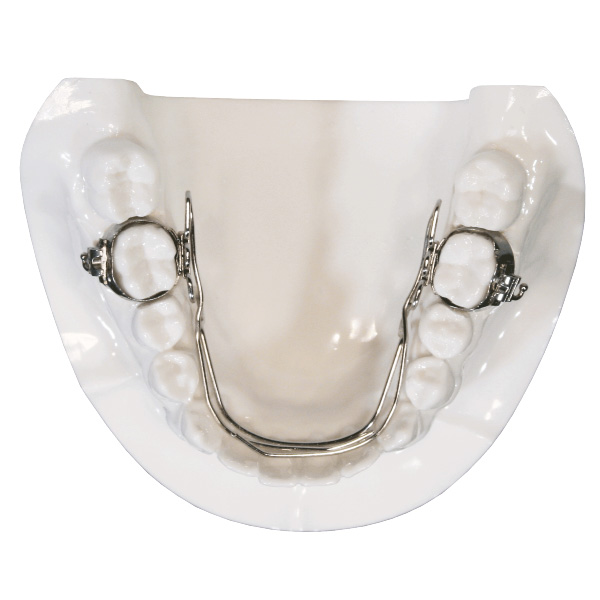
The Lower Quad Action can expand transversely and sagittally, but can also be used for individual tooth movement, as well as molar expansion, distalization, and torqueing.
Lab Requirements: Upper or Lower model free of bubbles, distortions, or voids. Impressions must be taken with a heavy body alginate or PVS.
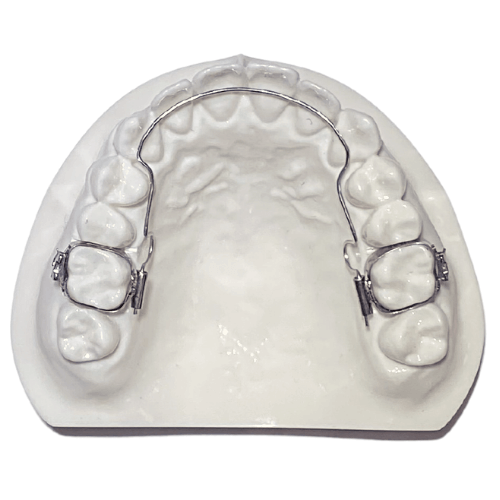
(Use with Myo Trainers)
The FS Light Wire Expander is a fixed-removable expansion appliance that provides optimal space for the tongue and is ideal for use with myofunctional training guides. It is fabricated with .028 wire that fits into bands with horizontal sheaths so it functions as a fixed appliance for the patient, but is easily removed by the doctor for adjustment.
Lab Requirements: Upper model, impression, or intraoral scan free of bubbles, distortions, or voids. Impressions must be taken with a heavy body alginate or PVS.
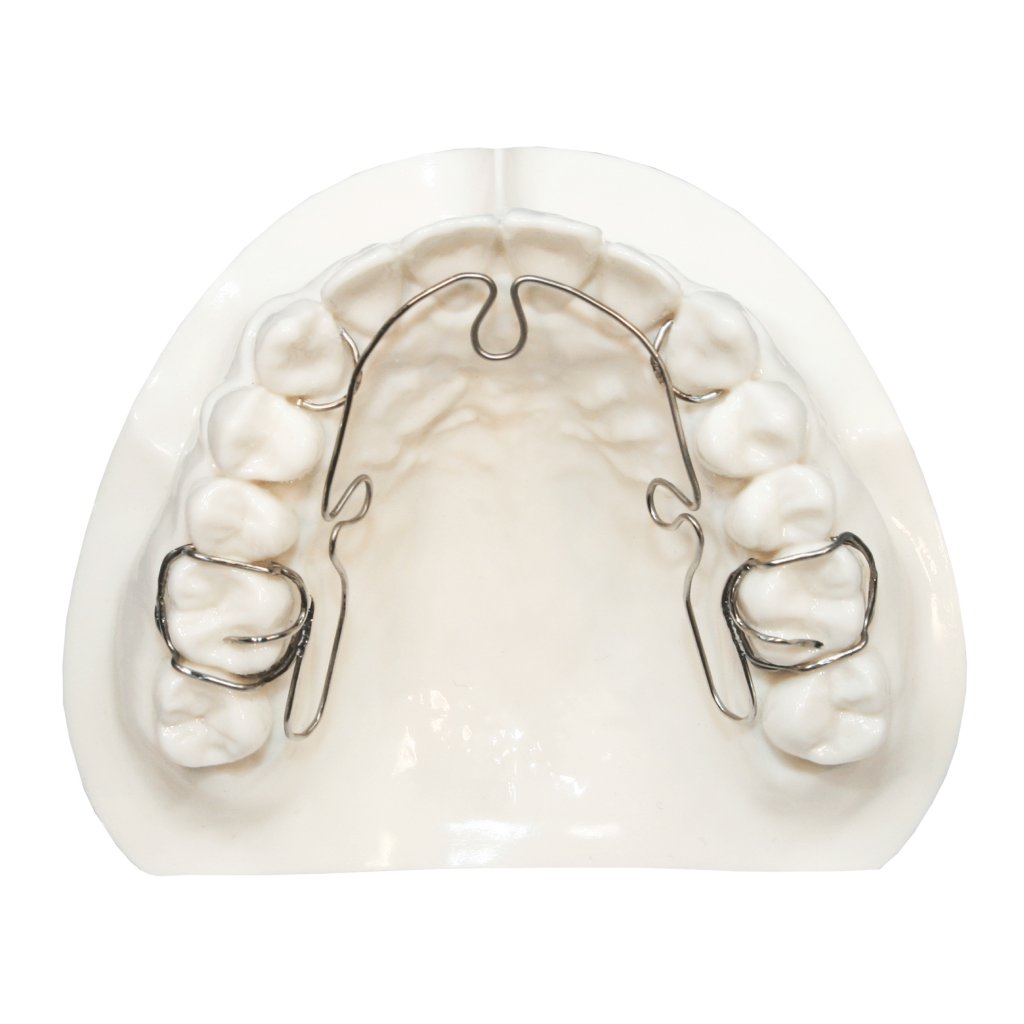
The ALF is a light wire removable appliance that is capable of delivering a differential amount of development in both arches. This appliance is incorporated in the treatment of a variety of malocclusions, however many practitioners often use it to treat chronic pain and TMD patients because of its ability to align the maxilla and correct cranial and upper cervical structural distortions. This appliance provides excellent development of both the inter-cuspid area and the posterior segments. It is easy to adjust, does not hamper speech, and can be worn comfortably while eating.
Lab Requirements: Upper or lower model free of bubbles, distortions, or voids. Impressions must be taken with a heavy body alginate or PVS.
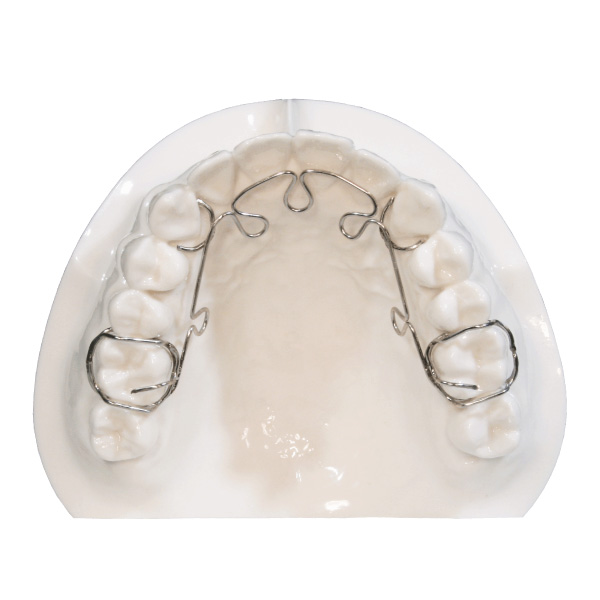
The 3 Way Alf is designed with additional omega loops in the cuspid region, giving the doctor more adjustment options and the ability to develop sagitally.
Lab Requirements: Upper or Lower model free of bubbles, distortions, or voids. Impressions must be taken with a heavy body alginate or PVS.

This Alf is designed with extension loops distal of the molars. These loops can be activated to distal drive molars.
Lab Requirements: Upper or Lower model free of bubbles, distortions, or voids. Impressions must be taken with a heavy body alginate or PVS.

The Banded ALF is a light wire fixed-removable appliance that is capable of delivering a differential amount of development in both arches. It is fabricated using bands with horizontal sheaths so it functions as a fixed appliance for the patient, but is easily removed by the doctor for adjustment. This appliance is incorporated in the treatment of a variety of malocclusions, however many practitioners often use it to treat chronic pain and TMD patients because of its ability to align the maxilla and correct cranial and upper cervical structural distortions. This appliance provides excellent development of both the inter-cuspid area and the posterior segments. It is easy to adjust, does not hamper speech, and can be worn comfortably while eating.
Lab Requirements: Upper and/or lower models free of bubbles, distortions, or voids. Impressions must be taken with a heavy body alginate or PVS.
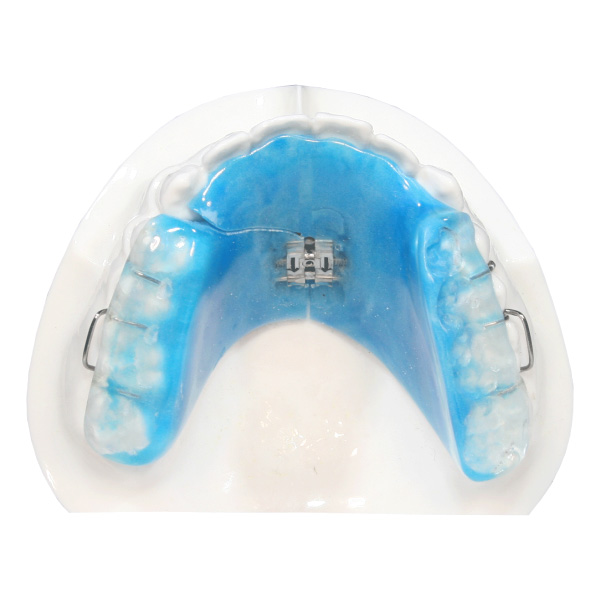
The Nord Crossbite is an upper unilateral expansion appliance. It is designed with occlusal pads on both sides and an acrylic phalange that anchors against the lingual side that does not need development.
Lab Requirements: Upper and Lower models free of bubbles, distortions, or voids and a bite registration. Impressions must be taken with a heavy body alginate or PVS.

The NPE2 is a pre-programmed thermal activated appliance used to rotate, upright, distalize, and expand the anterior and posterior segments with gentle biocompatible force. The NPE2 is an efficient slow expansion appliance and excellent for molar rotation. Doctors and patients enjoy the ease of this appliance. The main body is fabricated from heat activated, nickel titanium wire with shape memory. The NPE2 is preprogrammed to a specific arch width. Once that width has been achieved, the appliance remains passive and can then be used as an effective TPA to maintain arch width, molar location, and preserve valuable “E” space. If the patient requires molar rotation and expansion, bend the extension arms lingually so that they do not contact the bicuspids or cuspids. Once the desired molar rotation has been achieved, bend the extension wires buccally contacting the bicuspid region to achieve bicuspid expansion. The thermal properties of the NPE2 make it a breeze to insert. There are two common methods of insertion. The first approach is to band the first molars. Next, chill the NPE with chill spray, then utilizing the horizontal sheaths, slide the NPE2’s inserts into the horizontal sheaths intraorally. The second approach is to place the NPE into the horizontal slots outside the mouth. Then chill the appliance and cement both the band with the NPE appliance together.
Lab Requirements: Upper model free of bubbles, distortions, or voids. Impressions must be taken with a heavy body alginate or PVS.
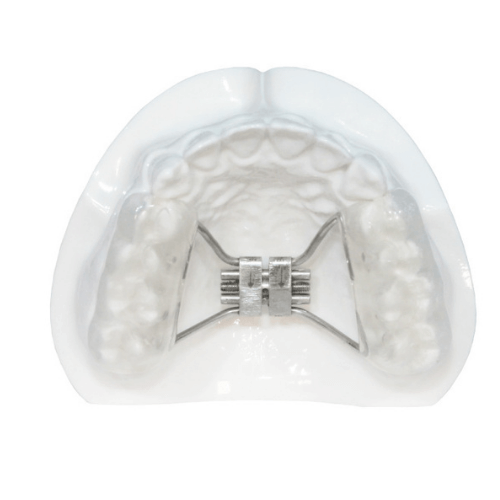
The Bonded RPE uses bondable occlusal pads for anchorage instead of molar bands and occlusal rests. The Bondable RPE is not recommended for patients in the later stages of mixed dentition.
Lab Requirements: Upper and Lower models free of bubbles, distortions, or voids and a bite registration. Impressions must be taken with a heavy body alginate or PVS.
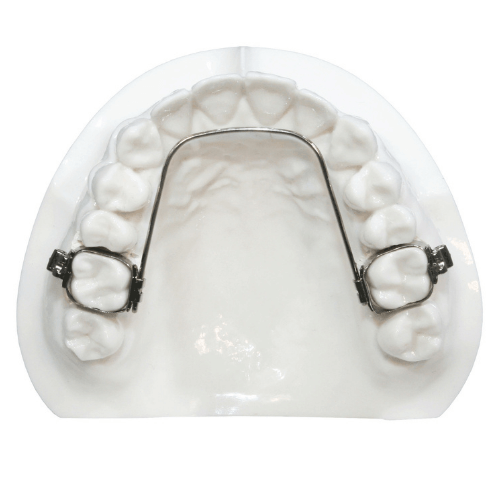
The LVI Functional Holding Arch is a “fixed-removable” appliance used to obtain arch expansion and proper tip, torque, and rotation of molars. It is called “fixed-removable” because while it is fixed for the patient, the appliance fits into vertical sheaths on the molar bands, making it removable for the doctor and resulting in easy adjustment of the appliance. The appliance can be easily removed from the vertical sheaths with a scaler. This versatile appliance can also be used as a space maintainer or to create cross-arch anchorage.
Lab Requirements: Upper or Lower model free of bubbles, distortions, or voids. Impressions must be taken with a heavy body alginate or PVS.
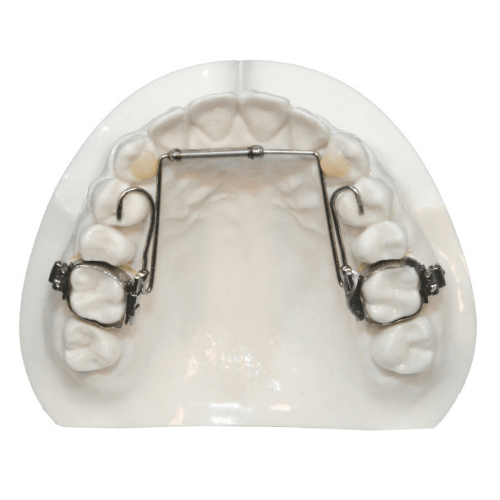
The Tansverse Transforce is a spring-loaded lateral expander that fits into horizontal sheaths on the molar bands. This appliance comes in several prefabricated sizes.
Lab Requirements: Upper or Lower model free of bubbles, distortions, or voids. Impressions must be taken with a heavy body alginate or PVS.
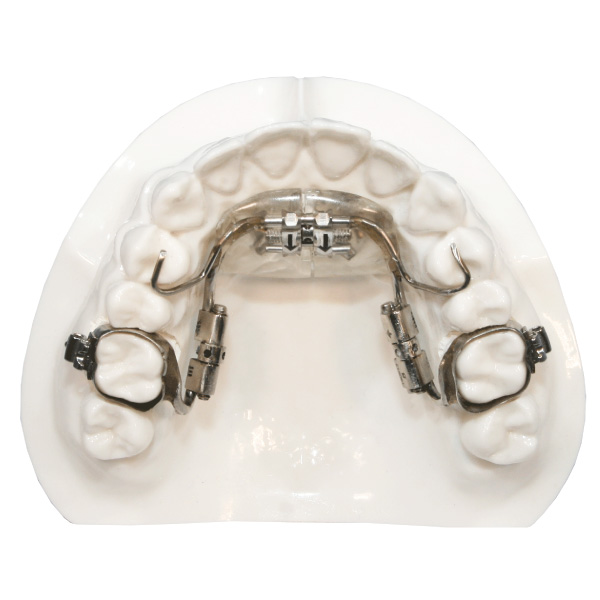
Simply put, there is not a better appiance for premaxillary development than the Barrel Fixed 3 Way. This sturdy appliance has countless benefits. It’s durable, easy to deliver and can be worn in conjunction with straightwire.
Lab Requirements: Upper or Lower model free of bubbles, distortions, or voids. Impressions must be taken with a heavy body alginate or PVS.
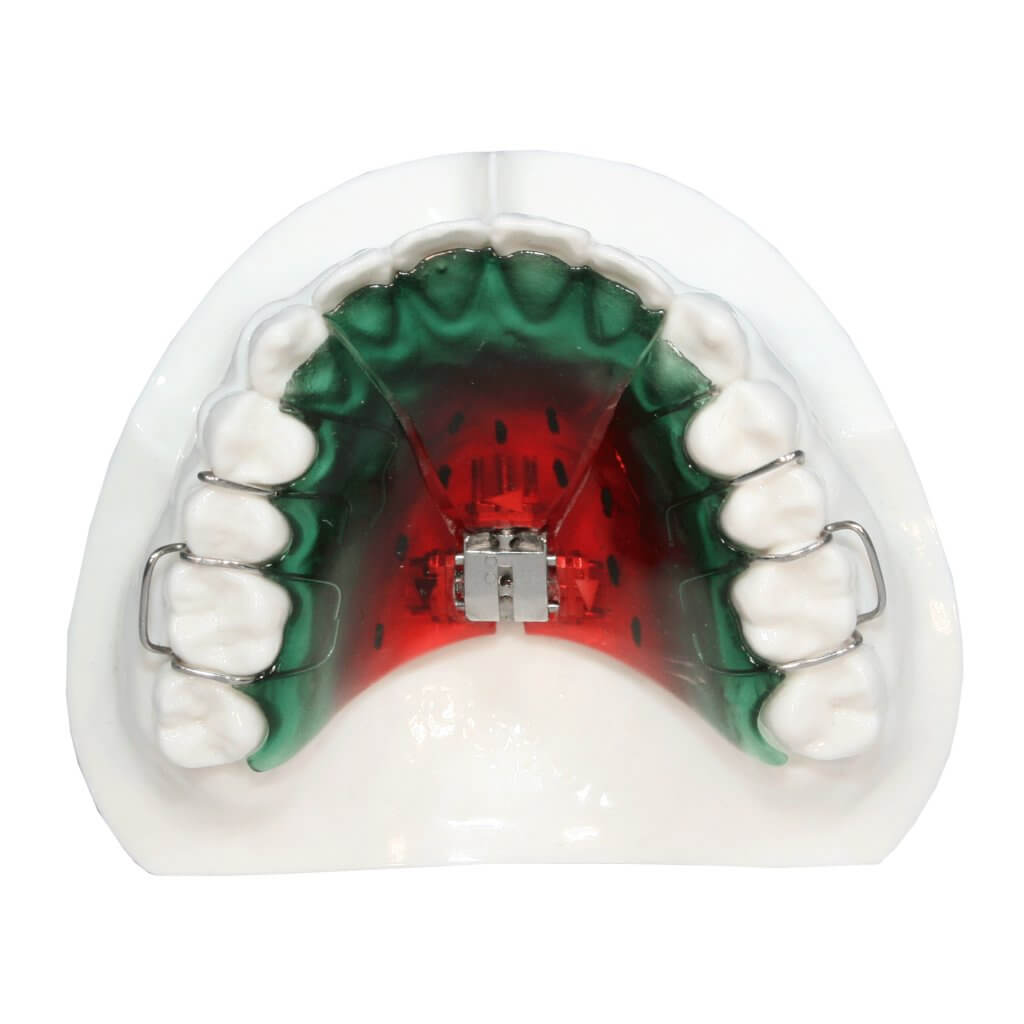
The 3-Way Schwarz is the removable version of the Barrel Fixed 3-Way. It is a great solution for patients in need of arch length and transverse development. This appliance features a 3-way gear that has 2 turning points, each turned twice per week. It can be used in conjunction with straightwire if designed with ball clasps rather than adam’s clasps.
Lab Requirements: Upper and lower models free of bubbles, distortions, or voids. The palate must be fully impressed. Impressions must be taken with a heavy body alginate.
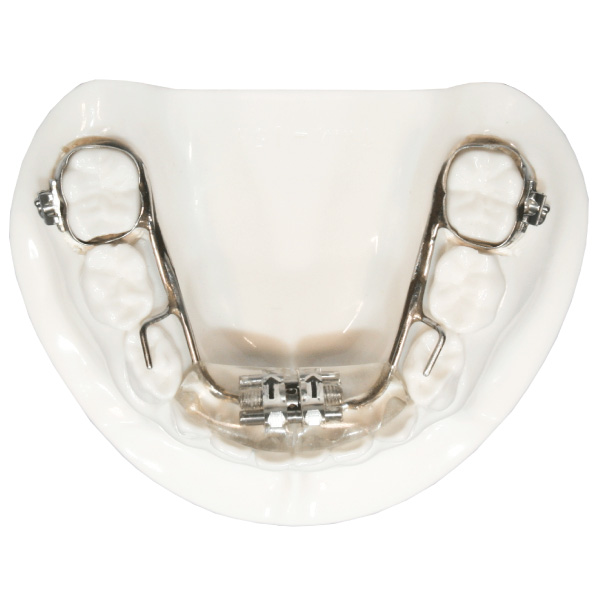
Adding acrylic to the anterior of a skeletal expander increases tongue comfort.
Lab Requirements: Upper or Lower model free of bubbles, distortions, or voids. Impressions must be taken with a heavy body alginate or PVS.
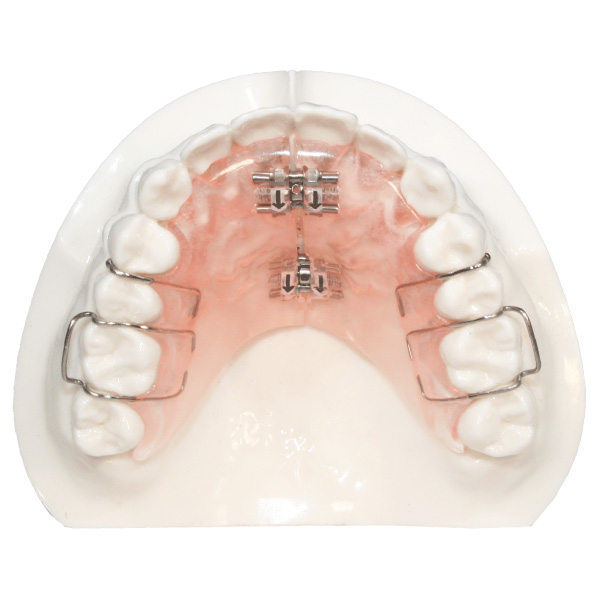
Longer arch lengths may benefit from placing two gears in the Schwarz.
Lab Requirements: Upper model free of bubbles, distortions, or voids. Impressions must be taken with a heavy body alginate or PVS.

This variation of the Barrel Fixed 3 Way can be designed for unilateral or bilateral distalization, along with transverse expansion.
Lab Requirements: Upper or Lower model free of bubbles, distortions, or voids. Impressions must be taken with a heavy body alginate or PVS.
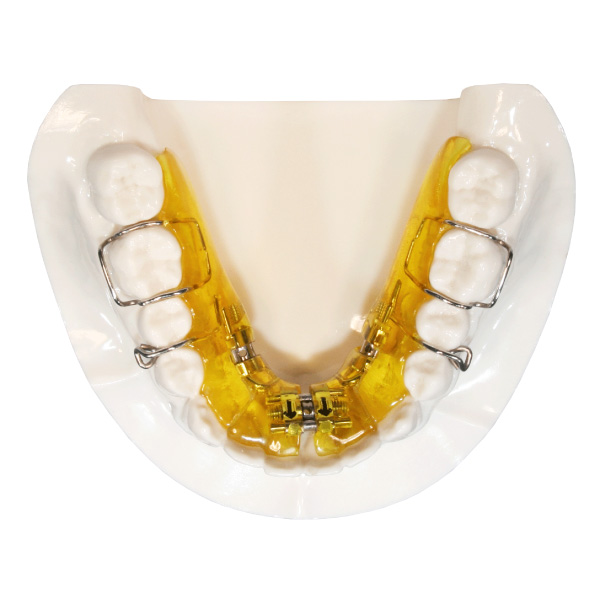
This Schwaz is designed with three separate gears, one in the anterior and two in the posterior. The acrylic cuts are placed mesial of the cuspids, resulting in anterior drive of the lower incisors.
Lab Requirements: Upper or Lower model free of bubbles, distortions, or voids. Impressions must be taken with a heavy body alginate or PVS.
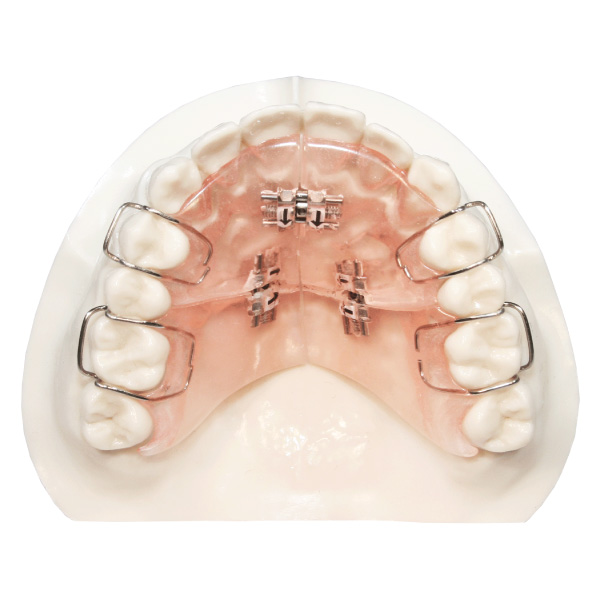
On the upper arch, the distalizing gears can be turned simultaneously.
Lab Requirements: Upper or Lower model free of bubbles, distortions, or voids. Impressions must be taken with a heavy body alginate or PVS.
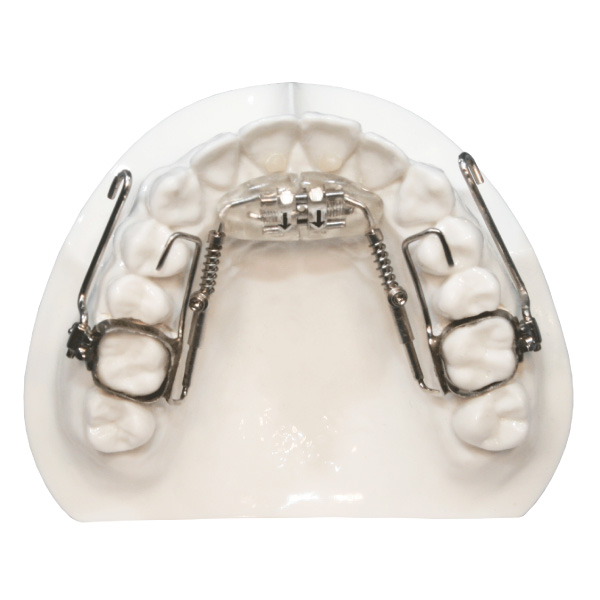
This design has occlusal rests connected to the molar bands which creates posterior anchorage, resulting in anterior development. It is recommended to place composite on the lingual of the centrals to the incisal of the acrylic. This prevents the acrylic from sliding up to the incisal edge of the teeth.
Lab Requirements: Upper or Lower model free of bubbles, distortions, or voids. Impressions must be taken with a heavy body alginate or PVS.
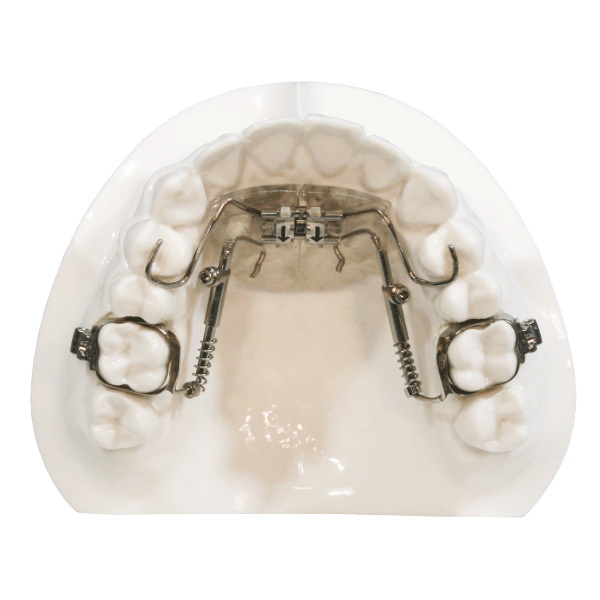
All the benefits of a Distal Jet, but with the addition of and expansion screw in the anterior acrylic to develop arch width.
Lab Requirements: Upper or Lower model free of bubbles, distortions, or voids. Impressions must be taken with a heavy body alginate or PVS.
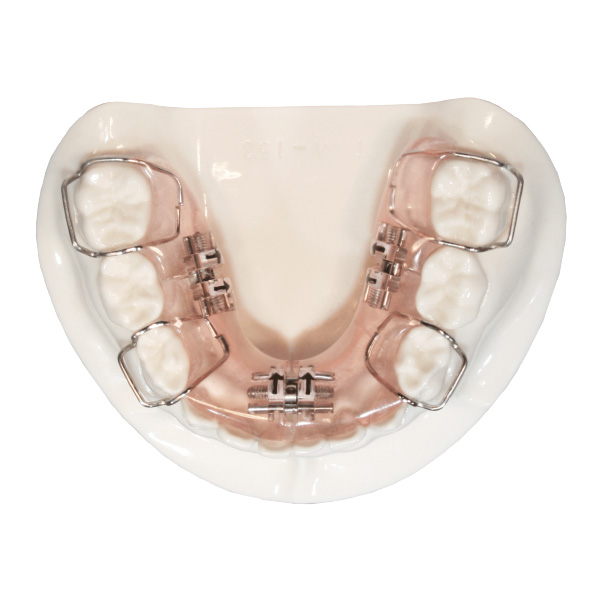
The 3 Way Schwarz can be designed to expand thransversely and distalize unilaterally or bilaterally. On the lower arch, the distalizing gears should only be turned one side at a time to prevent proclination to anterior teeth.
Lab Requirements: Upper or Lower model free of bubbles, distortions, or voids. Impressions must be taken with a heavy body alginate or PVS.
